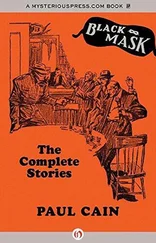Usually, MGB officers do not reveal their real names, but in this case, bowing to the sound of authority in Levinson’s voice, Sadykov can’t avoid making an exception.
“Lieutenant Narsultan Sadykov.”
“Sadykov … there was a Sadykov in my detachment in the Ural. A brave man,” says Levinson, pointing at one of the framed photographs on the wall.
It’s a small photo of a dozen men dressed in leather and sheepskin coats and a mad assortment of uniforms: the White Guard, British, American.
A tall man in a pointed Red Cavalry hat stands in the front row, his riding boot positioned on the barrel of a Maxim machine gun, his hand brandishing a curved cavalry sword. The boys behind him have the unmistakable devil-may-care look of brigands, their commander exhibiting the Byronesque spirit of a soldier-poet.
No formal education would be required to recognize that the photo was taken in 1918, when Bolsheviks had lost control of Siberia and the surviving Red Army detachments disappeared into the forest. The fact that young Levinson was fighting for the World Revolution so far from his native Odessa, in the Siberian woods, was part of the spirit of the times and didn’t need to be explained any more than one needed to explain the landing of American Marines and British troops in Vladivostok. The world’s most powerful nations joined to strangle Bolshevism in its cradle, and Levinson et al. came to defend it.
It’s not difficult to see how a man as imposing as Levinson would be elected the detachment commander. It’s more of a challenge to grasp how he could have survived the clashes alongside the Trans-Siberian Railroad. If images are to be believed, he displayed no signs of a capacity to avoid unnecessary risks. Such is the nature of Byronism.
In 1953, would it matter to anyone — least of all Sadykov — that thirty-five years earlier, in 1918, at a time when Bolsheviks lost control of Siberia, Levinson and his band fought in total isolation, moving through the taiga between Lake Baikal and the Ural Mountains?
“Can you see the round face next to the Maxim?” asks Levinson. Then, without receiving an acknowledgment, he adds, “That’s my Sadykov. Stayed in the Red Army, fought in Manchuria, Spain, rose to colonel. A carriage like yours took him to oblivion in 1938. A cousin, perhaps? Perhaps you’ve seen him caged someplace?”
It seems that someone forgot to instruct Lieutenant Narsultan Sadykov that a man whose job falls on the continuum between arrest and execution must not acknowledge the humanity of individuals upon whom he discharges his duties. If a person of any intelligence had written the manual for operations, it would read: Do not — under any circumstances — engage in polemics with the arrestees and the executees.
Of course, Narsultan Sadykov is not in any way connected with Levinson’s Sadykov. Many Tatars are named Sadykov, just as many Russians are named Ivanov, Ukrainians Shevchenko, and Jews Rabinovich. How would anyone, least of all Lieutenant Narsultan Sadykov (an orphan whose father’s name was unknown to anyone, likely including his mother), know whether he is related to Levinson’s Sadykov?
* * *
“Young man, are you, perchance, familiar with commedia dell’arte?” asks Levinson, turning abruptly to one of the nineteen-year-olds.
Though it’s impossible to verify such things, it’s unlikely in the extreme that any previous victim of Stalinism had ever mentioned commedia dell’arte at the time of arrest.
“Pidaras tochno,” responds one boy, addressing the other. (Definitely a pederast would be the exact translation, but the expression really means definitely a fag.) The boy utters this nonsense as though Levinson doesn’t exist. Onstage this would be called an aside.
Had Sadykov understood the situation, he would have rewarded this soldier’s perfect execution of denial of humanity.
“No,” replies Levinson casually. “Not a pidaras . Why would you think that? I said commedia dell’arte. Commedia dell’arte is a theatrical movement, which began in Italy in the sixteenth century. It spread, and it never fully went away. Molière’s characters are based on commedia character types. Our Gogol was influenced by commedia.”
“Pedrilo,” mutters one of the boys, summoning another variation on the theme of buggery.
“You are being dismissive out of ignorance. You will see in a minute that you do know something about commedia,” says Levinson, making eye contact with the boys, then casting a glance at Sadykov.
“Madness,” Sadykov concludes, but says nothing. He rifles through the old man’s desk, as per instructions. No Walther there, just an empty holster from a Soviet pistol, a basic Makarov.
The irrational should be handled indirectly, if at all. Though Levinson seems to be failing in his effort to engage the audience, his story is as accurate as he can make it.
After returning to Moscow in 1920, on a lark, Levinson auditioned for a theater troupe started by a young man named Alexander Granovsky.
This was an experimental theater company inspired in part by commedia dell’arte, badly in need of clowns and acrobats. Commedia was making a return as art for the people, and Granovsky recognized Levinson’s ability to play a sad, angry clown, akin to a recurring commedia character named Pulcinella. In Russian, Pulcinella was renamed Petrushka.
“I played variations on Petrushka for a long, long time. Of course, you’ve heard of Petrushka.” Levinson stops, as though he has just told a joke. “That would be within your intellectual grasp.”
Of course, there is no childish laughter of delight, no sign of recognition, no aha moment.
An argument can be made that the joke is on Levinson. His revolutionary past and obvious ability to inflict great bodily harm were the source of comedy.
Granovsky’s goal was to build a great European progressive theater company. What could be edgier than a menacing Petrushka? Komandir Petrushka, a sad, angry clown battling the forces of history. Levinson was an anachronism from the beginning. He was perfectly static, an actor who would not get any training, who would get neither better nor worse.
Levinson liked being a clown. After two years of being the agent of death, is there anything wrong with wanting to make audiences laugh, just like his father had made him laugh what seemed like centuries earlier? How is that different from becoming, say, a doctor? From his first performance to, now, his last, Levinson’s default has always been to go for laughs. A critic might call this pandering.
Levinson has learned that he loves being a part of an ensemble even more than he loves the sound of laughter. It reminds him of being in the forest, surrounded by his band. Onstage, as in the woods, the river of adrenaline runs wide and missteps are fatal.
Onstage, Levinson realizes that the line between reality and imagination is perilously porous.
* * *
Giving Sadykov no chance to say a word, Levinson places his hand on the young lieutenant’s shoulder and points at a photo of an acrobat, standing on his head, wearing tefillin. The object’s leather belt wraps around his right leg, from the knee to the ankle, like a black serpent or a weird garter.
“That’s me, in 1921,” says Levinson. “Twice wounded, demobilized, but, overall, no worse for wear. Standing on my head, with tefillin. Do you know about tefillin, what that was?”
“Khuy sobachiy,” says one of the boys. A dog’s penis.
“Not quite a khuy sobachiy, ” says Levinson, treating the idiotic insult as an argument in a learned discussion. “Jewish prayer rituals required every man to strap on two small black boxes, containing sacred texts: one on the forehead, another on the left arm. The ways of the shtetl had to go away. We were there to kick them down the stairs of history. With tefillin, we were slaves. Without it, we were free. Naturally, with tefillin, I stand on my head. Without it, I’d be right-side up.”
Читать дальше












